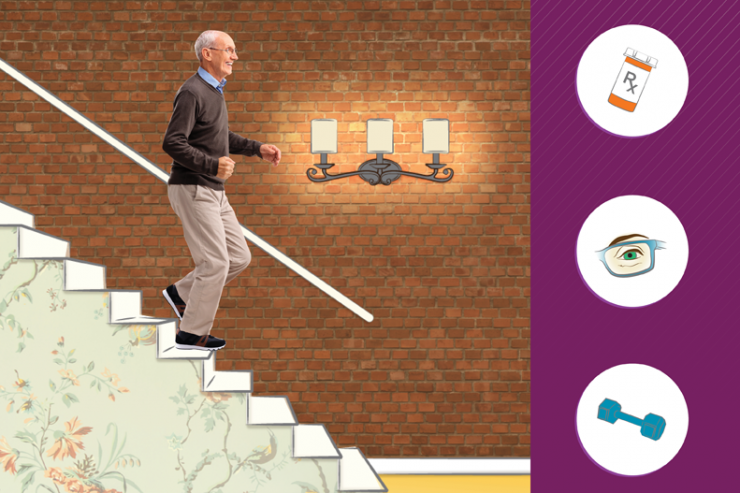Jordan Rohaus, DPT, neurotherapist at the UPMC Rehabilitation Institute outpatient rehabilitation clinic in the South Hills, discusses vestibular rehabilitation, or balance therapy, and what can be done to prevent seniors from falling.
Q: What is vestibular rehabilitation?
A: Vestibular rehabilitation is a type of physical therapy in which patients are evaluated and treated for disorders affecting their balance system. Their symptoms include dizziness and imbalance. Patients who need vestibular rehabilitation may range from young adults who have had a concussion, to older adults who have various issues that affect their balance.
Q: What causes dizziness and vertigo?
A: There are many possible causes of dizziness including low blood pressure, disturbance of the inner ear, and side effects from medication. It can also be caused by more serious conditions such as a stroke or traumatic brain injury. Benign paroxysmal positional vertigo, or BPPV, is the most common cause of vertigo. It is caused by calcium carbonate crystals, or otoconia, coming out of place within the inner ear. Physical therapists can perform specific head maneuvers to put the crystals back into place.
Q: Why are older adults more prone to falling?
A: Older adults are more prone to falling for a multitude of reasons, including vision impairment, orthopaedic injuries such as a hip or knee replacement, and conditions such as diabetes or heart disease. Side effects from certain medications can also increase the risk of falling.
Q: What can be done to prevent seniors from falling?
Never Miss a Beat!
Subscribe to Our HealthBeat Newsletter!
Thank you for subscribing!
You can now select the specific newsletters you'd like to receive.
You are already subscribed.
Subscribe to more newsletters in our email preference center.
Sorry, an error occurred. Please try again later.
Get Healthy Tips Sent to Your Phone!
A: Physical therapists can help prevent seniors from falling by encouraging them to stay active and exercise to build strength and flexibility. They can also have them practice performing functional activities such as getting out of a chair and walking. Physical therapists can encourage patients to follow up regularly with their doctor to review their medications, remind them to get their eyes examined, and educate them on a home exercise program to maintain their balance.
Q: What can patients do to decrease their fall risk at home?
A: Patients can decrease their fall risk by making sure their home is set up safely. They can do this by removing any loose throw rugs, ensuring there are no cords where they have to walk, and having nightlights in case they get up in the middle of the night to use the bathroom. Grab bars and non-slip mats in the shower as well as handrails on staircases are also good preventative measures to have in place. It’s also a good idea to have a cordless phone handy, in case they fall and need assistance getting up again.
To learn more about vestibular rehabilitation, visit UPMC Rehabilitation Institute or call 1-888-723-4277.
About UPMC Rehabilitation Institute
The UPMC Rehabilitation Institute offers inpatient, outpatient, and transitional rehabilitation, as well as outpatient physician services so that care is available to meet the needs of our patients at each phase of the recovery process. Renowned physiatrists from the University of Pittsburgh Department of Physical Medicine and Rehabilitation, as well as highly trained physical, occupational, and speech therapists, provide individualized care in 12 inpatient units within acute care hospitals and over 80 outpatient locations close to home and work.
